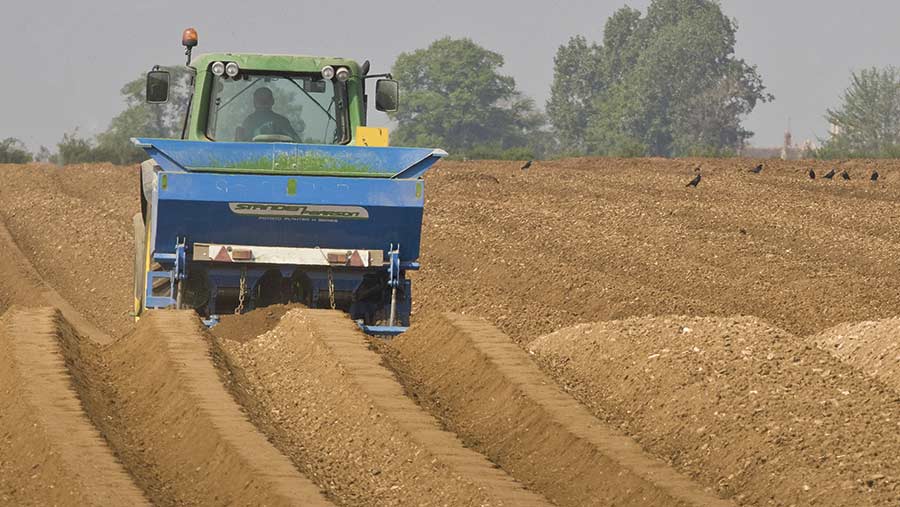Potato growers may see alternative nematicide by 2019
 © Tim Scrivener
© Tim Scrivener Potato growers may be able to use a new potato cyst nematicide by 2019 to control the industry most-damaging pest, which could be especially useful in early or salad crops.
It offers a new mode of action compared with other nematicides, and can be applied either as a liquid spray prior to planting, or as an in-furrow spray at planting. The product is awaiting regulatory approval and could be available for the 2019 planting season.
The Bayer product, known only as AR83685, will be an additional use for the SDHI fluopyram, which is used in the group’s new cereal fungicide Ascra, and also oilseed rape fungicides and barley seed dressings.
See also: How to get the best PCN control from biofumigant crops
It will provide an alternative to DuPont’s Vydate (oxamyl), which returned to the market in late spring 2016, after an accident at their factory in La Porte, Texas, caused a disruption in supplies during the previous 12 months.
Nigel Adam, Bayer’s seed treatment and potato product development manager, cautioned that while he was reasonably confident the product would make it on to the market next year, it was “unlikely to be available for planting”.
Mr Adam says that given that the product had a good environmental profile it would be particularly welcome for growers unable to use a granular product, such as those producing early or salad potatoes.
Not a silver bullet
Bayer acknowledges that while the crop has a new mode of action, trial work so far shows that it does not offer improved performance compared to its rivals.
Research has studied the impact of the chemical on both canopy area and potato yield, with Vydate showing marginally bigger canopies and higher yields compared with AR83685.
Across nine trials over a three-year period, Vydate-treated crops produced a gross yield of 43t/ha, 20% more than untreated plots, while AR83685-treated crops yielded 39t/ha, 9% more than the untreated plots.
Integrated approach required
Speaking to Farmers Weekly, Mr Adam says the product will not be a silver bullet for nematode control, but it is important for the health of the sector to have a range of products available.
“We don’t want to kill the existing products and put all the pressure on a single active – we are looking to provide an additional tool in the fight against nematodes,” he says.
Chemical control should only be one component of an integrated strategy for management, he explains, saying that there is also an important role for improved plant genetics, longer rotations and bacterial control.
The problem has been exacerbated in recent years by susceptible varieties continuing to be grown in large quantities because of strong market demand for recognisable brands.
“Until we get a [resistant] variety as good as Maris Piper, and marketed as effectively, the problem will continue,” explains Mr Adam.
Some growers are finding success with cover cropping, such as radish and mustard, for their biofumigant properties, with up to 50% reduction in potato cyst nematode populations in some trials, as well as trap cropping, which provokes a nematode hatch before the potato crop is planted.
See also: Potato cyst nematode: Why trap cropping could be the answer
Bacterial products are in the early stages of research by Bayer, but it is hoped in time that these will provide similar defensive properties to roots against nematodes that existing products such as Votivo already do in maize.
Mr Adam was addressing a Bayer potato conference alongside other speakers on 26 January in Peterborough.

